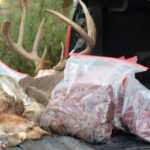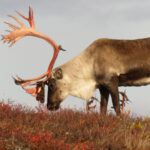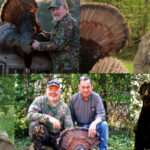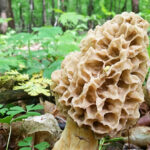LAST UPDATED: December 1st, 2022
For most deer hunters across the country, the peak of rut activity has passed, and the remaining days of deer season are dwindling. If you didn’t get that buck you were after, or still hope to put some more meat in the freezer, don’t put that bow away just yet. There’s still plenty of good hunting to be had, and late season can be a great time to find success.
The rigors of the rut can have a profound impact on whitetail bucks, with some losing as much as 30 percent of their body weight in pursuit of willing does. Once the rut winds down, those same bucks have to turn their attention to food so they can head into winter in as good of shape as possible. This drive to fuel their bodies results in a more predictable bedding-feeding pattern in the late season that can tip the odds in a persistent bowhunter’s favor.
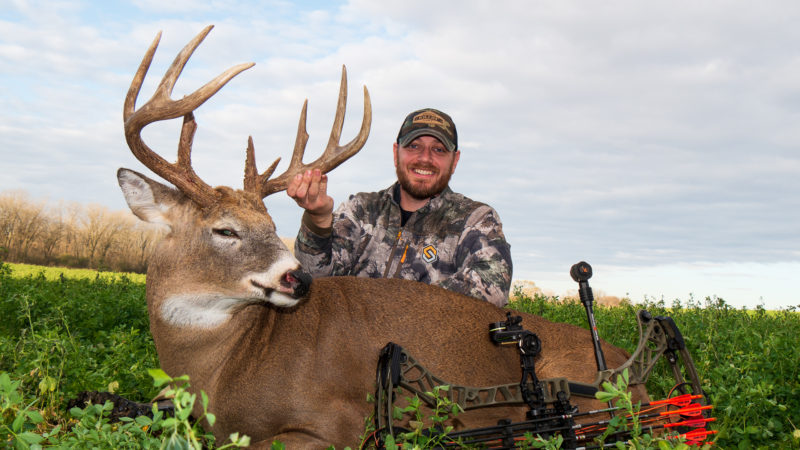
So with bucks turning their attention back to food during the late season, just what food sources provide your best opportunity for putting a tag on one? That depends! I know that wasn’t exactly the answer you were looking for, but the answer will vary depending on where you are in the country and what food sources are available this time of year. Let’s take a look at some of the key late season food sources for deer hunters across the country that may help you find late-season success.
Food Plots
If you’re fortunate enough to have access to a hunting property with managed food plots, late season can be a great time to capitalize on those plots. Cool season plots consisting of cereal grains like wheat, rye or oats, or brassicas like turnips, rape or radishes, can both provide plenty of great late-season action. Depending on how hard these food plots were hunted during the season, you may need to back well off of the actual plot along a travel route to catch the deer staging up before entering the plot at dark. And you’ll definitely want to make sure you are watching the wind closely and only hunting the plot when conditions are ideal.
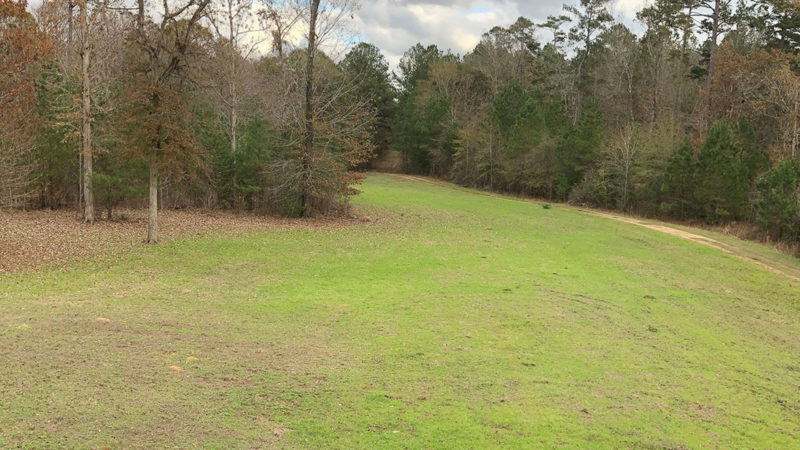
Remaining Crop Grains, Corn, Beans
While corn and soybeans have likely long been harvested by this point in the season, that doesn’t mean deer still won’t hit those fields looking for any remaining grains to help fuel them through the winter. A quick scouting excursion to these fields should be able to give you a pretty good clue if there is any grain remaining in the field and how hard the deer are hitting it in the late season. If you can find an area of unharvested corn or soybeans, even better! The colder the weather, the more likely the deer will be hitting those late-season grains.
Acorns
Most deer hunters know that whitetails favor white oak acorns, but not all of them know exactly why that is. In a nutshell (pun intended), white oak acorns are less bitter than red oak acorns because they contain less tannin. Tannin is a preservative of sorts that helps prevent acorns from rotting or being eaten before they germinate. White oak acorns germinate in the fall, soon after falling from the tree, while red oak acorns don’t germinate until the following spring. So red oak acorns need higher levels of tannin to keep them viable until spring.
By this time of year, most white oak acorns have either been eaten by deer, turkeys, hogs and squirrels, have germinated, or have started to rot, meaning they are not available as a food source for the deer. However, red oak acorns are likely still available, and will be well into winter. And even though they may not be a deer’s first choice, they will certainly feed on them this time of year.
Acorn feeding activity can be hit or miss in the late season, so some in-season scouting may be necessary to check out as many red oak trees as possible looking for fresh sign of feeding activity — tracks, cracked acorn hulls, and droppings — to let you know a particular feed tree is worth hunting.
Woody Browse
While woody browse — consisting of buds and twigs — makes up a big part of a whitetail’s winter diet, it’s probably one of the most overlooked when it comes to hunting late-season food sources. On a large tract of timber, it may seem like the deer could be eating buds and twigs pretty much anywhere— and they can. But that doesn’t mean that you can’t narrow down your search to locations much more likely to hold the deer you’re after. Look for areas of cutovers or young forest, where there will be plenty of woody browse available within easy reach of browsing deer. These areas also provide excellent cover, which can be critical for providing pressured deer with the security they need to feed during daylight hours.
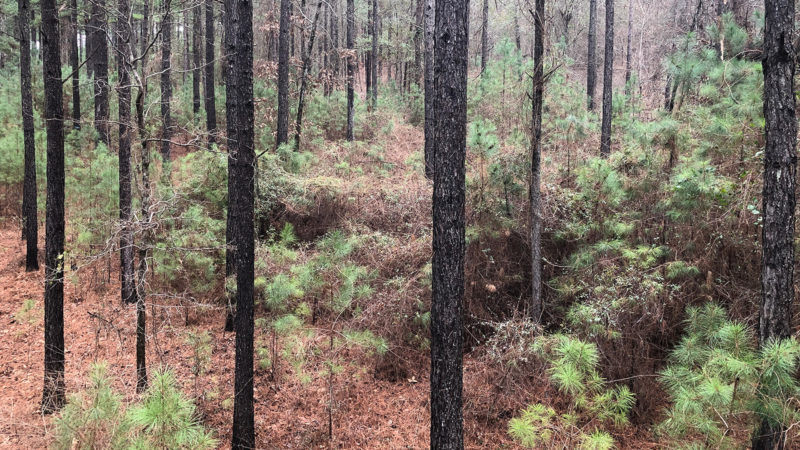
Greenery
While just about anything green and growing during the late season could potentially serve as a deer food source, some plants are much more preferred than others. Two particular favorites are honeysuckle and greenbrier. Similar to favored woody browse, honeysuckle and greenbrier will often be found in areas of young growth with good cover. Look for these pockets of greenery where you hunt, and scout it regularly to know when the deer are consistently using it.
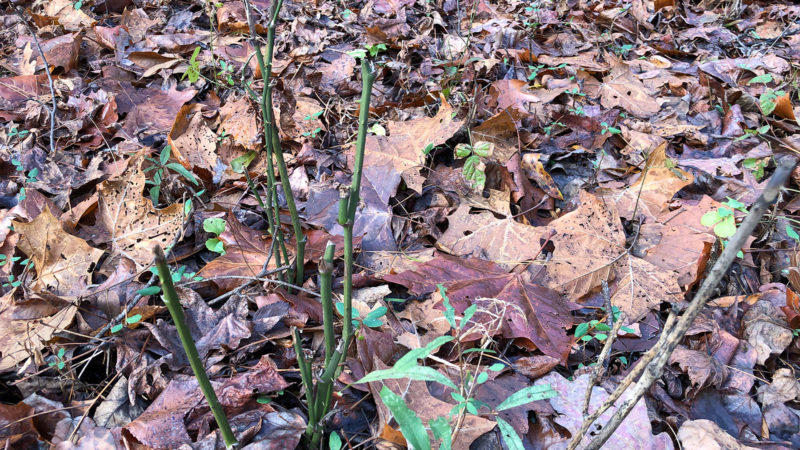
While it hasn’t yielded a mature buck for me yet, focusing on these pockets of honeysuckle and greenbrier late season has helped me put an extra doe in the freezer each of the two last years on the last day of Georgia’s deer season.
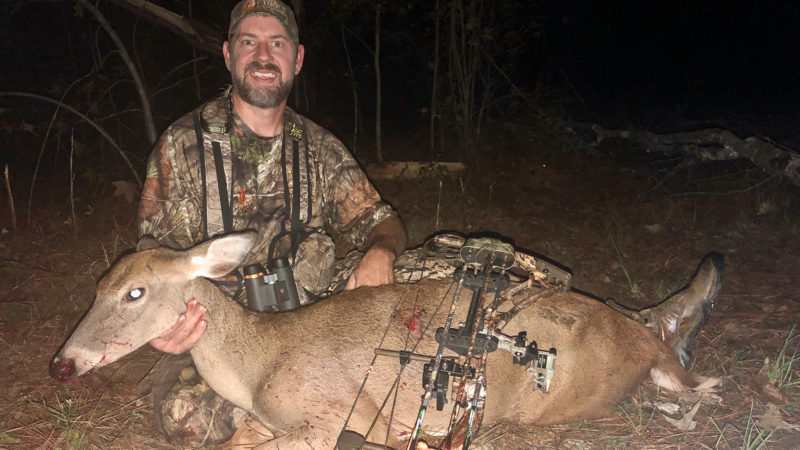
Golden Acorns
I’m not here to debate the ethics of baiting. If it’s legal where you hunt, and you’re not opposed to hunting over a corn pile, it can be a great way to put venison in the freezer late season. Some recent research conducted by the University of Georgia showed that adult bucks (2.5 or older) were much more likely to show up at a bait site during daylight hours during the post-rut period — nearly three times more likely than pre-rut.
Wrap Up
The late season can be a challenging time of year to fill a deer tag, but the opportunity is still there for a persistent bowhunter to kill a great buck. The key is finding what food sources the deer are keying in on where you hunt, and capitalizing on that information. The best way to get started is to put boots on the ground and scout your entire hunting area looking for fresh feeding sign. Once you’ve located key feeding sources, hunt smart, play the wind, and use major weather events (ie. a big winter cold front) to help tip the odds in your favor. You may just hit the late-season lottery with the buck you were chasing all season.

 By
By 